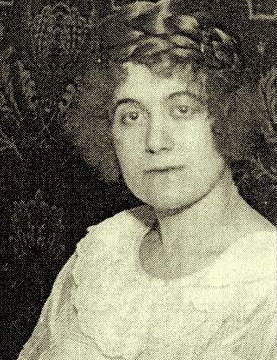‘Twas the morning post-party, when
all through the house,
No adult was stirring, not even your spouse.
The children, you thought, were asleep in their beds.
But, what you didn’t know, they had other ideas in their heads.
No adult was stirring, not even your spouse.
The children, you thought, were asleep in their beds.
But, what you didn’t know, they had other ideas in their heads.
Your house was awash in post-party trash,
And the kids thought this was a gold mine—better than cash.
There were ashtrays with butts and glasses with drink,
And a visitor’s purse lay there by the sink.
And the kids thought this was a gold mine—better than cash.
There were ashtrays with butts and glasses with drink,
And a visitor’s purse lay there by the sink.
The kids were delighted and felt ever so free,
And then their bright eyes—locked onto the tree!
There was tinsel, and lights that bubbled so merry,
And a strange plant with fruits, called “Jerusalem Cherry”.
Food was left out on the table all night,
And if they could have seen the bacteria—what a horrible sight!
And there by the fireplace was a box shaped just right,
That contained some powder to make fire colors bright.
A small toy broke open, and there at their feet,
Was a round tiny battery that looked good to eat.
And then their bright eyes—locked onto the tree!
There was tinsel, and lights that bubbled so merry,
And a strange plant with fruits, called “Jerusalem Cherry”.
Food was left out on the table all night,
And if they could have seen the bacteria—what a horrible sight!
And there by the fireplace was a box shaped just right,
That contained some powder to make fire colors bright.
A small toy broke open, and there at their feet,
Was a round tiny battery that looked good to eat.
As you see your home, where you thought poisons naught,
On this holiday season, was NOT as safe as you thought!
As you rose from your sleep and rubbed your eyes free,
You looked for the kids, and a disaster you see!
On this holiday season, was NOT as safe as you thought!
As you rose from your sleep and rubbed your eyes free,
You looked for the kids, and a disaster you see!
You sprang to the phone, not a moment to spare,
And talked to the folks you knew would be there.
Your poison center sure helped you get through the mix,
And you thought—“How’d we ever get into this fix?”
For you see holidays can present problems so rare,
That before they can happen, you must be sure to prepare.
And talked to the folks you knew would be there.
Your poison center sure helped you get through the mix,
And you thought—“How’d we ever get into this fix?”
For you see holidays can present problems so rare,
That before they can happen, you must be sure to prepare.
It takes just a moment to think what might be,
And clean up your trash, so your home’s poison free.
And so, my dear friends, keep the holidays bright,
Put all away, and sleep peaceful tonight.
Have a holiday bright, that is full of good cheer,
And from the staff of the poison center—“Have a Safe Year!”
And clean up your trash, so your home’s poison free.
And so, my dear friends, keep the holidays bright,
Put all away, and sleep peaceful tonight.
Have a holiday bright, that is full of good cheer,
And from the staff of the poison center—“Have a Safe Year!”
Written by John H. Trestrail III, R.Ph, ABAT
Clinical and Forensic Toxicologist
Clinical and Forensic Toxicologist
Thank you to the the American Association of Poison Control Centers blog.



